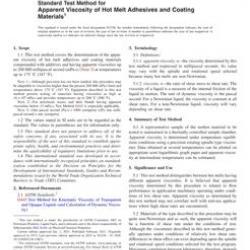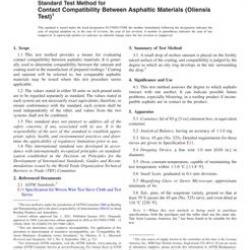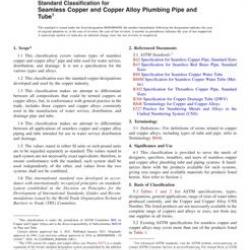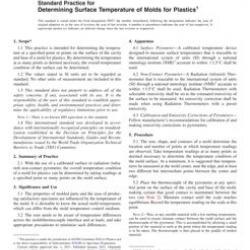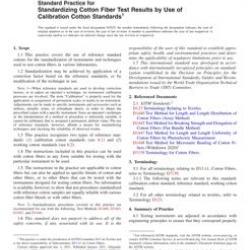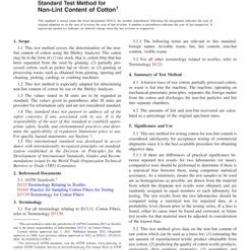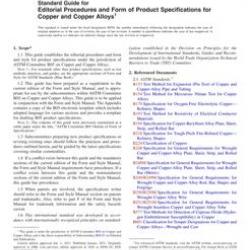No products
ASTM E1995-98
ASTM E1995-98 Standard Test Method for Measurement of Smoke Obscuration Using a Conical Radiant Source in a Single Closed Chamber, With the Test Specimen Oriented Horizontally
standard by ASTM International, 12/10/1998
Full Description
1.1 This is a fire-test-response standard.
1.2 This test method provides a means of measuring smoke obscuration resulting from subjecting essentially flat materials, products, or assemblies (including surface finishes), not exceeding 25 mm (1in.) in thickness, in a horizontal orientation, exposed to specified levels of thermal irradiance, from a conical heater, in the presence of a pilot flame, in a single closed chamber. Optional testing modes exlude the pilot flame.
1.3 The principle fire-test-response characteristic obtained from this test method is the specific optical density of smoke from the specimens tested, which is obtained as a function of time, for a period of 10 min.
1.4 An optional fire-test-response characteristic measureable with this test method is the mass optical density (see Annex A1), which is the specific optical density of smoke divided by the mass lost by the specimens during the test.
1.5 The fire-test-response characteristics obtained from this test are specific to the specimen tested, in the form and thickness tested, and are not an inherent property of the material, product, or assembly.
1.6 This test method does not provide information on the fire performance of the test specimens under fire conditions other than those conditions specified in this test method. For limitations of this test method, see 5.5.
1.7 Use the SI system of units in referee decisions; see Practice E380. The inch-pound units given in parentheses are for information only.
1.8 This test method is used to measure and describe the response of materials, products, or assemblies to heat and flame under controlled conditions, but does not by itself incorporate all factors required for fire hazard or fire risk assessment of the materials, products, or assemblies under actual fire conditions.
1.9 Fire testing of products and materials is inherently hazardous, and adequate safeguards for personnel and property shall be employed in conducting these tests. This test method may involve hazardous materials, operations, and equipment. See also 6.2.1.2, Section 7, and 11.7.2.
1.10 This standard does not purport to address all of the safety concerns, if any, associated with its use. It is the responsibility of the user of this standard to establish appropriate safety and health practices and determine the applicability of regulatory limitations prior to use.






